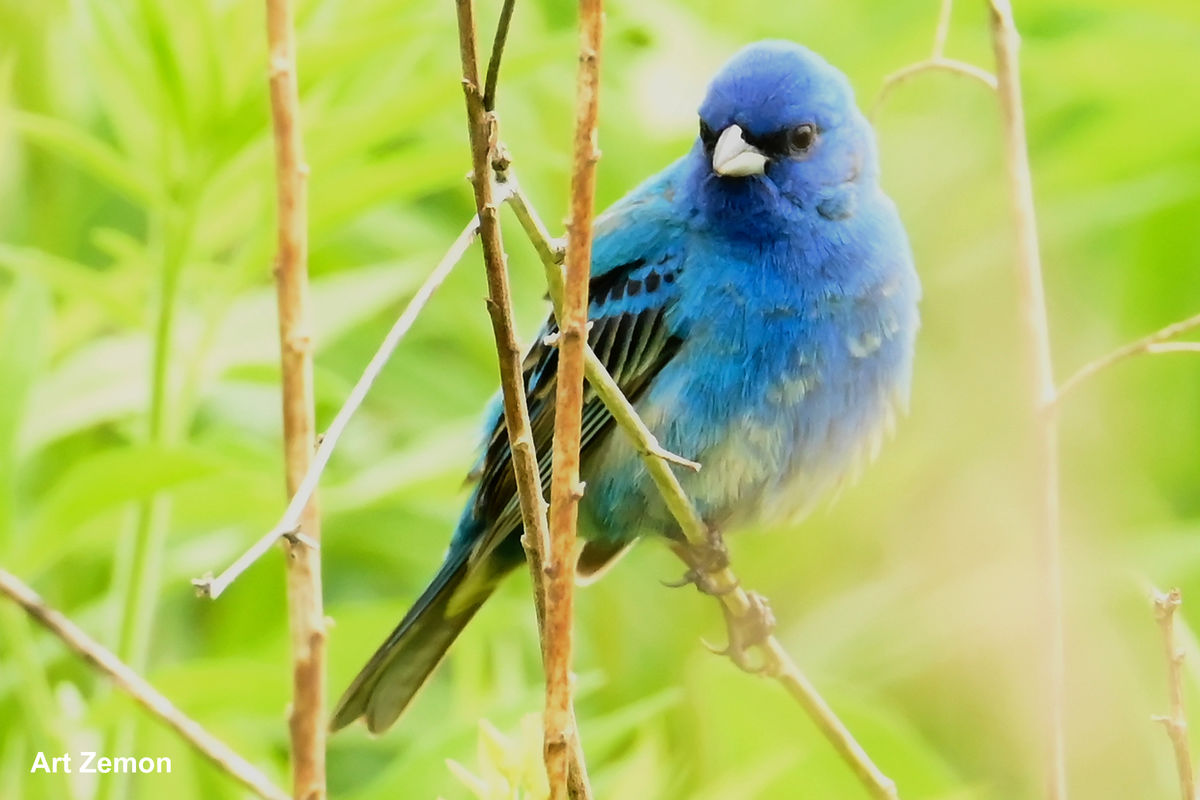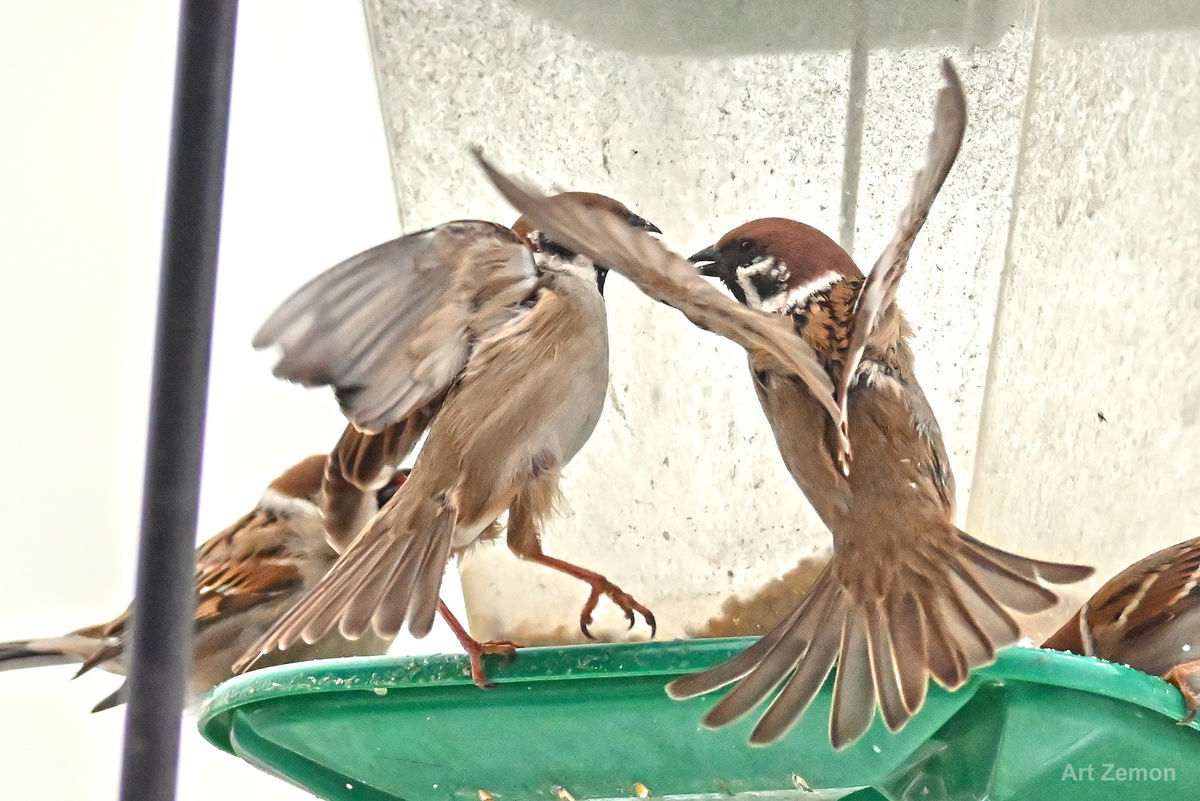Is these JPEG artifacts?
May 26, 2022 08:34:50 #
It might be a good idea to read and understand any edition of “Understanding Exposure, How to Shoot Great Photographs with Any Camera” by Bryan Peterson.
May 26, 2022 09:03:25 #
All of the settings are too high. The high f/stop and the high shutter speed forced the ISO up too high, and the camera applied excessive noise reduction to compensate for the high ISO. If you let the camera automatically control all three things, this kind of thing can happen. Learn more about exposure basics and take control of the machine.
May 26, 2022 09:05:23 #
azemon
Loc: Saint Charles, MO, USA
Yes! High ISO NR was the problem. It was set to Normal and that was introducing the artifacts in the JPEG images. Turning it off gives me JPEGs without the artifacts. And, fortunately, the Z 5 does not apply High ISO NR to raw images so that gives me a second option.
May 26, 2022 12:04:31 #
My take on image resolution is that "distance matters". Our camera sensors can only capture the light that is reflected off of the objects in front of the lens. When objects are close within a few inches away, such as in macro, there is little to interfere with those waves of light between the lens and the subject. When taking a picture of a tree that is some hundred yards away, the atmospheric conditions cause the waves of light to alter. Atmospheric shimmer, humidity, particles in the air, haze, and other reflecting and refracting light waves, all affect the clarity and sharpness of the light captured by the sensor. Think of it as how we can be fooled by mirages in the desert or how a ship can appear to be floating above the ocean.
The camera sensor is an "analog device" that responds in proportion to the waves of light striking it. Our cameras today are "digital" so the analog signal must be converted to a digital signal by means of the analog-to-digital processor. THAT is then the signal that any of the camera settings will "tweak" to produce the final digital image which then can be converted to the specific output file format, such as Jpeg, Tiff, etc.
The camera sensor is an "analog device" that responds in proportion to the waves of light striking it. Our cameras today are "digital" so the analog signal must be converted to a digital signal by means of the analog-to-digital processor. THAT is then the signal that any of the camera settings will "tweak" to produce the final digital image which then can be converted to the specific output file format, such as Jpeg, Tiff, etc.
May 26, 2022 12:48:33 #
The old rule. Shoot as close to the native ISO ( usually around 100 ) as possible to get maximum resolution.
WJH
WJH
May 26, 2022 15:41:30 #
May 26, 2022 20:20:33 #
I assume you were shooting in daylight, why did you have to use iso 4000?.....that might be part of your problem!
May 26, 2022 21:57:13 #
azemon
Loc: Saint Charles, MO, USA
Ched49 wrote:
I assume you were shooting in daylight, why did you have to use iso 4000?.....that might be part of your problem!
It was a cloudy windy gusty day and I was mostly shooting birds, both in-flight and on the rapidly waving grass. I took a break on a bench next to my wife and saw those two trees. I grabbed the shot without bothering to reset my camera. Naturally, I don't normally shoot static subjects at ISO 4000 with a high shutter speed an small f-stop.
I was surprised to see the smeary artifacts when I got home and wondered where they came from. Ysarex correctly identified the source: the High ISO Noise Reduction processing in the camera. I did some experimenting and found that I can avoid that processing either by turning it off (doh) or by shooting raw.
May 27, 2022 08:30:47 #
You have a VR-enabled lens and an IBIS-enabled mirrorless body. Use them. Trust them. You bought them to enable and enhance your native skills.
These two tools, VR and IBIS, combine to provide 5- to 7-stops support. Even if you don't need to shoot at the edges of the technology limits, at least trust the technology to the minimums. The cropped B&W shows a 500mm shot. Start at the old 1/focal-length guideline and shoot this scene at 1/500 sec. All that technology will give you support for reliable results at that speed. With no other changes, that lets you bring down your ISO.
A 2-stops slower speed will bring down the ISO by two stops, to ISO-1000, if you keep the same f/11 aperture. The 1/500 sec will still freeze the tree movement / water, if that is an important characteristic of your composition.
As mentioned, look at your NR setting in the camera for your JPEGs. The NR setting may have over-reacted to the ISO setting of the camera. Given you're processing your images, such as this B&W crop, consider addressing noise in your post rather than letting the camera do it. If you shoot RAW, it won't matter what additional NR the camera applies as that setting doesn't apply to the RAW.
Regarding sharpness of the tree bark, we'd need you to post and store store the original unedited version so we can see where you focused. If you wanted sharp tree bark, did you focus there specifically? One might think f/11 could capture this entire scene in sharp focus. But the reality is that you still need to consider where you set your focus. From the original we can dig into more of these details.
These two tools, VR and IBIS, combine to provide 5- to 7-stops support. Even if you don't need to shoot at the edges of the technology limits, at least trust the technology to the minimums. The cropped B&W shows a 500mm shot. Start at the old 1/focal-length guideline and shoot this scene at 1/500 sec. All that technology will give you support for reliable results at that speed. With no other changes, that lets you bring down your ISO.
A 2-stops slower speed will bring down the ISO by two stops, to ISO-1000, if you keep the same f/11 aperture. The 1/500 sec will still freeze the tree movement / water, if that is an important characteristic of your composition.
As mentioned, look at your NR setting in the camera for your JPEGs. The NR setting may have over-reacted to the ISO setting of the camera. Given you're processing your images, such as this B&W crop, consider addressing noise in your post rather than letting the camera do it. If you shoot RAW, it won't matter what additional NR the camera applies as that setting doesn't apply to the RAW.
Regarding sharpness of the tree bark, we'd need you to post and store store the original unedited version so we can see where you focused. If you wanted sharp tree bark, did you focus there specifically? One might think f/11 could capture this entire scene in sharp focus. But the reality is that you still need to consider where you set your focus. From the original we can dig into more of these details.
May 27, 2022 08:56:00 #
azemon
Loc: Saint Charles, MO, USA
CHG_CANON please be aware that VR, whether in-camera or in-lens, does not eliminate subject motion. It only helps with camera motion. To get birds frozen in action, I know from experience that I need a high shutter speed. See, for example, this photo. There is still blurring in the wings even though I shot it at 1/3200.
As for the original image, if you read my original post then you will see that I did upload the original image.
As for the original image, if you read my original post then you will see that I did upload the original image.
May 27, 2022 09:00:37 #
azemon wrote:
CHG_CANON please be aware that VR, whether in-camera or in-lens, does not eliminate subject motion. It only helps with camera motion. To get birds frozen in action, I know from experience that I need a high shutter speed. See, for example, this photo. There is still blurring in the wings even though I shot it at 1/3200.
As for the original image, if you read my original post then you will see that I did upload the original image.
As for the original image, if you read my original post then you will see that I did upload the original image.
I missed the download in the middle image. That image was a landscape. Don't go and confuse the discussion of those issues by tossing in a bird shot. If you want sharp details, focus where you want those sharp details and use the lowest ISO possible for the composition.
May 27, 2022 09:10:38 #
azemon
Loc: Saint Charles, MO, USA
CHG_CANON you also missed the point of this thread which is, "I think that I am looking at JPEG artifacts but would appreciate confirmation or other ideas." To save you more reading: The artifacts were caused by the High ISO NR processing in the camera, not JPEG compression.
May 27, 2022 09:21:27 #
Given the AF position, it seems the ISO and softening of the details and the noise reduction are the primary cause. As mentioned earlier, look at using the minimum shutterspeed needed for the conditions (subject / composition and equipment). Given this composition, focus maybe on a primary subject closer to the camera, such as the trees rather than the river bank that is slightly further back.
Consider the aperture needed to capture the composition. Using the shutter speed adjustment above, f/11 is still forcing you to ISO-1000. I guestimate 30-meters distance at 500mm giving a DOF of 2.4-meters, about 8-feet. Maybe this is deep enough for the trees and some water and grass behind.
I'd try: focus on a tree instead of the bank, slower still to 1/400 sec, and maybe f/8 to try for ISO-400. I'd take a lot of shots with different focus points, trying both trees, and minor exposure adjustments around these parameters, picking the best result of the bunch when I get home.
Consider the aperture needed to capture the composition. Using the shutter speed adjustment above, f/11 is still forcing you to ISO-1000. I guestimate 30-meters distance at 500mm giving a DOF of 2.4-meters, about 8-feet. Maybe this is deep enough for the trees and some water and grass behind.
I'd try: focus on a tree instead of the bank, slower still to 1/400 sec, and maybe f/8 to try for ISO-400. I'd take a lot of shots with different focus points, trying both trees, and minor exposure adjustments around these parameters, picking the best result of the bunch when I get home.

May 27, 2022 11:45:30 #
May 27, 2022 12:12:45 #
azemon wrote:
CHG_CANON please be aware that VR, whether in-camera or in-lens, does not eliminate subject motion. It only helps with camera motion. To get birds frozen in action, I know from experience that I need a high shutter speed. See, for example, this photo. There is still blurring in the wings even though I shot it at 1/3200.
As for the original image, if you read my original post then you will see that I did upload the original image.
As for the original image, if you read my original post then you will see that I did upload the original image.
A beautiful capture 🤎☀🤎☀🤎
If you want to reply, then register here. Registration is free and your account is created instantly, so you can post right away.






